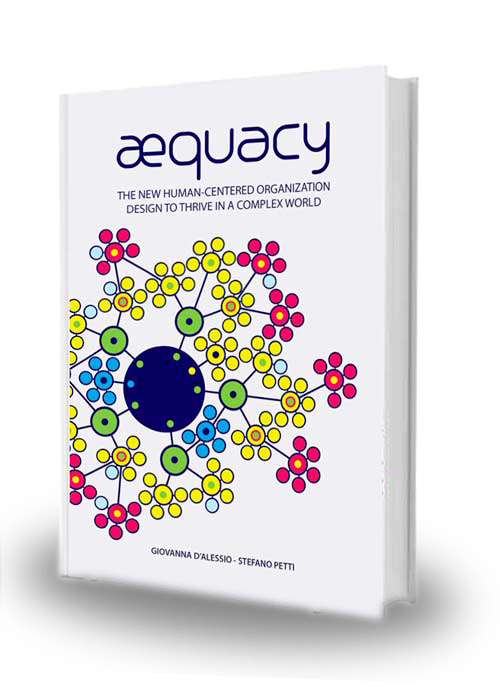3 (Surprising) Reasons Why Change Management Programs Fail

These challenges are common to all corporations, across geography, industries and size. The higher the organizational entropy (or level of dysfunction), the more typical the challenges: bureaucracy, hierarchy, control, short-term focus, silo mentality, blame, and information hoarding.
Many organizations try to solve their issues implementing a change management program. The program can be about moving to a matrix structure or a flat structure, adopting Lean or Agile initiatives, and more recently Smart Working.
Now … the research so far shows that only 30% of change initiatives express their full potential… and it is interesting to note that this percentage has not changed in the last 20 years.

So much has been written about the reasons that lead to these results, but in our opinion, little has been said about three of the main reasons why, from our point of view, the change management process does not work as it should:
1
The first concerns the fact that in most cases the change management principles are implemented without worrying too much about the need to change the mindset and the conditions of distrust, control and inequity that permeate the culture of most companies. Implementing a change management process without taking this element into account is like throwing a seed on dry land and hoping that a strong plant will miraculously grow.
2
The second reason, which is also one of the most important discoveries of our research, is that the hierarchical system, by itself, reinforces precisely those dynamics that the company wants to eliminate. It’s as if I wanted to lose weight and feel fit by changing my diet, but I keep swallowing more calories than needed and not making changes to other aspects of my lifestyle.
3
The third reason is that all change models suggested by change management consultants require that the change be defined, planned, refined and approved by a narrow circle of top managers with very little input and no employee participation. When the change plan is presented to the rest of the organization it’s then untouchable and any suggestion or doubt from employees is labeled as “resistance to change”. But people do not resist change. They resist impositions.
1
The first concerns the fact that in most cases the change management principles are implemented without worrying too much about the need to change the mindset and the conditions of distrust, control and inequity that permeate the culture of most companies. Implementing a change management process without taking this element into account is like throwing a seed on dry land and hoping that a strong plant will miraculously grow.
2
The second reason, which is also one of the most important discoveries of our research, is that the hierarchical system, by itself, reinforces precisely those dynamics that the company wants to eliminate. It’s as if I wanted to lose weight and feel fit by changing my diet, but I keep swallowing more calories than needed and not making changes to other aspects of my lifestyle.
3
The third reason is that all change models suggested by change management consultants require that the change be defined, planned, refined and approved by a narrow circle of top managers with very little input and no employee participation. When the change plan is presented to the rest of the organization it’s then untouchable and any suggestion or doubt from employees is labeled as “resistance to change”. But people do not resist change. They resist impositions.
make decisions and those who can only implement them, the message that people receive, beyond the goodwill of
managers, is that there are two categories of employees: one above and one below. Employees who are below do not
deserve trust, so they must be monitored and supervised and cannot make decisions. On the other hand, only the
highest ranks of the organization are authorized to make decisions. In this way, control, bureaucracy, lack of trust,
internal competition, risk aversion, silos are continually fed.


Adopting an AEquacy structure and mindset is the way to overcome the systemic issues generated by hierarchy so that change is enduring and sustainable.

make decisions and those who can only implement them, the message that people receive, beyond the goodwill of
managers, is that there are two categories of employees: one above and one below. Employees who are below do not
deserve trust, so they must be monitored and supervised and cannot make decisions. On the other hand, only the
highest ranks of the organization are authorized to make decisions. In this way, control, bureaucracy, lack of trust,
internal competition, risk aversion, silos are continually fed.

Adopting an AEquacy structure and mindset is the way to overcome the systemic issues generated by hierarchy so that change is enduring and sustainable.

Discover the Organizational Design of the future, a company with no bosses and no hierarchical structure.
Start here your company’s journey to increase:
Speed
Performance
Collaboration
Innovation
AEquacy – The New Human Centered Organizational Design to Thrive in a Complex World.
“An important contribution to our understanding of the structural changes necessary to promote
organizational collaboration and innovation. Highly recommended.”
Michael J. Gelb
(Author of How to Think Like Leonardo da Vinci and Innovate Like Edison)
Download the first chapter FOR FREE
Discover the Organizational Design of the future, a company with no bosses and no Hierarchical Structure.
Start here your company’s journey to increase:
Speed
Performance
Collaboration
Innovation
AEquacy – The New Human Centered Organizational Design to Thrive in a Complex World.

Download the first chapter FOR FREE
“An important contribution to our understanding of the structural changes necessary to promote
organizational collaboration and innovation. Highly recommended.”
Michael J. Gelb
(Author of How to Think Like Leonardo da Vinci and Innovate Like Edison)


